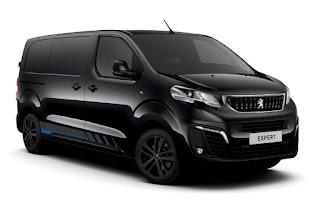Electric KTM Freeride
Austrian manufacturer KTM has unveiled its Freeride electric bikes at the Tokyo Motorcycle Show.
Available as either an off-road enduro or a street-orientated supermoto, both versions share the same battery and motor technology. That means a peak 30 horsepower and a top speed of 43 mph (70 km/h). Performance is helped by the two bikes being so diminutive - total all-in weight is only 90 kg, including the battery pack.
As with most electric vehicles, it’s the battery that will be so critical to the success of the product. Price, performance, range and recharging time are all directly influenced by it.
According to KTM, the Freeride’s 2.5 kWh battery should be good for one hour of off-road riding. After that, it’ll take 90 minutes to fully recharge, although alternatively it can simply be swapped over for another one - assuming the rider can afford the cost of a spare.
KTM is planning to commence European Freeride sales in spring 2011, with a price expected to be ‘under €10,000’ - that’s around £9,000 at today’s exchange rates. By comparison the KTM 125 SX, a two-stroke petrol-powered enduro, is £5,256. Such a difference can partly be explained by the money spent on developing the Freeride, but it’s mostly down to the cost of that battery.
There are already a few electric scooters on the market, but the Freeride’s main competition will probably come from the Zero Motorcycles range.
Zero’s X and MX off-roaders are less powerful than the Freeride, producing 23 hp from a 2.0 kWh battery. However, they do only tip the scales at 73 kg and 78 kg respectively, so that weight advantage should help to overcome some of the power deficit versus the KTMs.
UK prices are also much less than those envisaged for the Freeride, with the X starting at £5,995 and the MX at £6,595. The other Zero models are the S supermoto and DS dual-purpose. Both cost £7,995, and use a more powerful 4 kWh battery that allows a top speed of 67 mph and a range of 50 miles (80 kilometres).
The current state of electric vehicle technology means bikes like KTM’s Freeride seem expensive. But they may safeguard the future of off-road motorcycle sport, because of their virtually silent running. True, reduced carbon emissions are a benefit, but noise is often a real problem. It causes objections from nearby residents which, combined with local regulations, often mean it’s difficult to stage events or build a track.
Available as either an off-road enduro or a street-orientated supermoto, both versions share the same battery and motor technology. That means a peak 30 horsepower and a top speed of 43 mph (70 km/h). Performance is helped by the two bikes being so diminutive - total all-in weight is only 90 kg, including the battery pack.
As with most electric vehicles, it’s the battery that will be so critical to the success of the product. Price, performance, range and recharging time are all directly influenced by it.
According to KTM, the Freeride’s 2.5 kWh battery should be good for one hour of off-road riding. After that, it’ll take 90 minutes to fully recharge, although alternatively it can simply be swapped over for another one - assuming the rider can afford the cost of a spare.
KTM is planning to commence European Freeride sales in spring 2011, with a price expected to be ‘under €10,000’ - that’s around £9,000 at today’s exchange rates. By comparison the KTM 125 SX, a two-stroke petrol-powered enduro, is £5,256. Such a difference can partly be explained by the money spent on developing the Freeride, but it’s mostly down to the cost of that battery.
There are already a few electric scooters on the market, but the Freeride’s main competition will probably come from the Zero Motorcycles range.
Zero’s X and MX off-roaders are less powerful than the Freeride, producing 23 hp from a 2.0 kWh battery. However, they do only tip the scales at 73 kg and 78 kg respectively, so that weight advantage should help to overcome some of the power deficit versus the KTMs.
UK prices are also much less than those envisaged for the Freeride, with the X starting at £5,995 and the MX at £6,595. The other Zero models are the S supermoto and DS dual-purpose. Both cost £7,995, and use a more powerful 4 kWh battery that allows a top speed of 67 mph and a range of 50 miles (80 kilometres).
The current state of electric vehicle technology means bikes like KTM’s Freeride seem expensive. But they may safeguard the future of off-road motorcycle sport, because of their virtually silent running. True, reduced carbon emissions are a benefit, but noise is often a real problem. It causes objections from nearby residents which, combined with local regulations, often mean it’s difficult to stage events or build a track.














Comments
Post a Comment